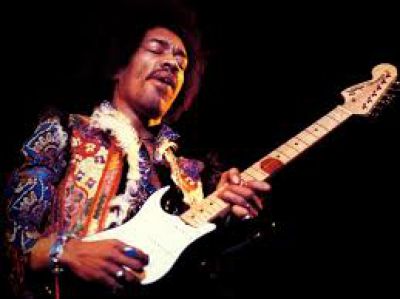
 A short history of Drugs and Music
A short history of Drugs and Music
A short history of the interesting and undeniable relationship between drugs and music...
I’ve often questioned how altered the musical landscape of the past century would be without the inextricable influence of drugs. It’s easy to under estimate the impact of narcotics, namely psychedelics, but to drive the point home as poignantly as I can: How many of the greatest albums of the past 100 years were conceived whilst immersed in the parallel existence of LSD? Just have a peek at Rolling Stone’s 500 greatest albums of all time and be exposed to this revelation; simply by having a look at some of the album covers produced between 1966 and 1970 will enlighten the inquirer of the drug-fuelled renaissance that was taking place throughout the period.
However before we were even beginning to approach the ‘utopian’ period of the 1960’s, with which history now looks upon nostalgically with an almost mythical status, the Jazz-age of the 1920’s and onwards was also well acquainted with the world of substances. The intricate relationship between music and narcotics well predates the escapades of Jimi Hendrix and The Beatles: Charles Parker and even Ray Charles were inducing themselves in the weary world of heroin years before a hippy ‘movement’ was espousing the virtues of psychedelia and ‘flower power’.
Unfortunately the correlation between heroin and Jazz is explained through a more flagitious narrative. Rather than the recreational and inspirational means that successive movements undertook the use of drugs for, the Jazz pioneers had strenuous tour-schedules, received little in the way of payment and were often the only Black Americans granted entry to the very venues they were playing. Ray Charles probably experienced this internal persecution greater than any other artist; often playing in front of all white audiences with the knowledge that these were some of the same faces that treated him with such scornfulness. The plaintive psychological consequence of racial discrimination provides an insight as to why some of the godfathers of Jazz and Soul sought to use ‘smack’; using the substance as medication to ease the terror of internal conflict and touring fatigue of the period.
If you wish to gain an understanding of the happenings on this side of the Atlantic during that period, then a valuable source of information can be found in The Who’s Quadrophenia. The film provides an engrossing account of the pill-popping British counterculture of the era. The ‘mods’ were guzzling down amphetamines and partying till 6 in morning decades before the first ravers embarked on their ecstasy infused evenings. Bands like The Who and The Kinks provided the soundtrack to this rebellious angst; providing a more enraged iconoclasm than that of ‘flower power’.
Bod Dylan too resorted to the use of narcotics, for both recreation and a means of staying energised for a hectic touring schedule during the years of 1965 and 1966; using a concoction of marijuana and amphetamines. During this period, as a result of what was essentially a chance meeting between Dylan and The Beatles had arguably a more significant impact on the face of popular music than any other introductions of the era. This was the catalyst for The Beatles beginning the transformation from a juvenile pop band to the most influential group of the past century: Dylan introduced The Beatles to weed.
In a hotel room in New York the face of popular music was altered indefinitely. If Dylan had never introduced The Beatles to weed; there would be no Revolver, no Sgt Pepper and therefore the possibility of no psychedelic counterculture of the late 1960’s.
So with John Lennon sitting in his country estate, drinking tea with sugar cubes full of LSD writing I am the Walrus, and Chad Chandler (The Monkey’s band member turned manager) bringing Jimi Hendrix over to London with the consequence of transforming the sonic realm in which popular music dwelled, the utopian epoch of colourful enlightenment had truly arrived; hippy’s everywhere were exclaiming ‘free love’, and ‘flower power’ was starting to affect every aspect of the 60’s counter culture. This undoubtedly produced some of the most momentous music ever recorded and experienced some of the greatest moments in the history of popular music: the concept of the music festival was conceived; coming to a climax in 1969 at Woodstock with Hendrix dropping bombs on the star spangled banner.
The ‘Summer of Love’ came and went. By the end of 1970 what was projected as a virtuous philosophy had proven itself as simply an excuse for self-destructive hedonism: Hendrix, Jones, Joplin and Morrison were all dead, The Beatles had broken up and the hippy dream was deceased.
So why it is that drugs and music are so inexplicably linked? Other than the inevitable use for recreation, the explanation is simple: regardless of how loosely our society uses the term ‘genius’ to describe an artist, the truth is that few people (musical artists included) are in actuality; genius is a transient state of mind capable of everyone in less or greater extents and is obviously the experience of an artist when producing their best work. Drugs are a means of attempting to experience this state of mind inorganically.
The relationship between narcotics and music is eternal; with that sentiment being just as relevant now as in eras gone by. For instance it’s hard to imagine that electronic music (of all genres) would have evolved to the point it has without its relationship it has with MDMA. It no coincidence that the ‘second summer of love’ (1989) coincided with ecstasy becoming extensively available for the first time.
The great comedian Bill Hicks also has a few words to say on the subject…
Daniel Zartz
